![]()
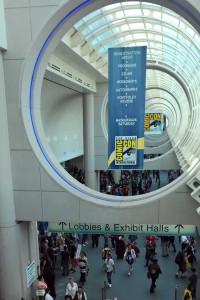 If Sundance and Toronto are known for launching most of the films that will ultimately compete for awards in the fall, San Diego’s Comic-Con has become invaluable for rolling out news, clips, and general breathless excitement about summer tentpoles – the kind of films that really don’t need to worry about award season. But these would be the blockbusting pics coming next year, when attendees will be cosplaying in outfits from those movies, while oohing and ahhing at clips from movies still a year ahead.
If Sundance and Toronto are known for launching most of the films that will ultimately compete for awards in the fall, San Diego’s Comic-Con has become invaluable for rolling out news, clips, and general breathless excitement about summer tentpoles – the kind of films that really don’t need to worry about award season. But these would be the blockbusting pics coming next year, when attendees will be cosplaying in outfits from those movies, while oohing and ahhing at clips from movies still a year ahead.
There are variants to this pop culture wheel of fortune, however. Sometimes the summer Con can be used to get people very excited about blockbusters that arrive the following winter, rather than a whole summer away. For example, the coming installment of the Skywalker family saga.
And since winter is indeed coming, it seems germane to note that Comic-Con is also used by studios and networks to promote lots of television. Lots and lots of television.
And yes, there are still people talking about, buying, selling – and dressing as characters from – comic books, too. Even comics that haven’t been turned into movies yet.
However, around the circus that is Hall H and the big announcements (themselves leaked to the Internet seconds after being enunciated live to the fans who’ve camped for 20 hours outside to hear and see these tidbits), and the banners draping hotels and the network TV shows swaddling local restaurants in the plumage of series ad campaigns, there are plenty of people taking their art and craft quite seriously, whether artists, writers, game designers, and of course, the various craft-folk who comprise our beat here at Below the Line.
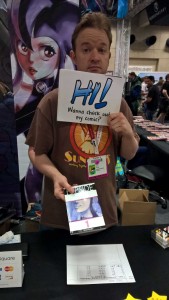 The surprise, really, is that there aren’t more below-the-line guilds, unions and groups offering up panels of their talented members at the Con.
The surprise, really, is that there aren’t more below-the-line guilds, unions and groups offering up panels of their talented members at the Con.
For the 2015 edition, we caught up with both the Art Directors Guild and the Costume Designers Guild, each of whom did offer up panels – and talented members – to the full houses they commanded in a large third floor conference room. As moderator and production designer John Muto said on Saturday’s panel touting The Production Designer: Architect of Imagination, “I don’t know why we’re not in Hall H.”
Ahead of the ADG, though, was the CDG. They took to the stage both Friday afternoon and Saturday morning.
Their first panel, Technology as a Costume Tool, was moderated by Joe Kucharski, editor of the Tyranny of Style website. The almost baseball team-sized lineup included Hunger Games’ Alan Villanueva, Jurassic World’s Christian Cordella, designer-to-the-rock-stars Soyon An (also designing the upcoming Jem and the Holograms), former head of costumes and archives at Marvel Studios, Timothy Wonsik, Batman v. Superman’s Jared Marantz, costume illustrator Oksana Nedavniaya (currently at work on Ghostbusters) and Renee Nault, a custom costume builder with many past missions in previous Star Trek iterations.
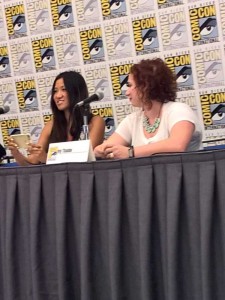
They were there to talk about how the tools of the trade were changing. Many had started with pencil or watercolors as their first step towards costume design or illustration, but as Villanueva noted, “we’re expected to work a little faster now.”
Among the pick-up-the-pace tools were Adobe Photoshop and ZBrush, as noted by both Villanueva and Cordella. Marantz even cited a repurposing of Maya, that software system so beloved in the VFX world, when there was “something to be fabricated.”
Though Nault was quick to point out that fabrication is changing too with use of 3D printing of custom pieces. Wonsik mentioned that at Marvel they scanned actors and made mannequins of them for fittings.
The next morning, Kucharski was moderating a smaller CDG group, talking about Today’s Costume Designers, those very same crafts-folk who find their tools shifting from analog to digital (along with most other film workers). Joining the returning An was Sleepy Hollow’s Kristin Burke, Ivy Thaide of the Mindy Project and Kamen Rider, and from the world of Marvel, Ann Foley from Agents of SHIELD, and Giovanna Melton from Agent Carter.
Thaide talked about practical aspects of design, like leaving pivot points for stunt rigs in motorcycle jackets for Kamen Rider, while Foley echoed Villanueva’s earlier observation about production time: Sometimes she has five weeks to get a costume made, but “sometimes I have 10 days.”
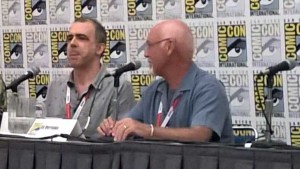
Burke expanded on this, saying that in a wired-up world, “people expect things faster,” and more specifically, in Hollywood, there was an expectation that things can get done with the same speed that decisions can be made about script or casting changes.
Melton said for the look of Carter, though, they were using “tailoring techniques of the 1940s,” for an authentic period look, something that doesn’t lend itself to lots of rushing.
But all agreed that none of it could happen without their crews. As Melton said, “I couldn’t do this job without my crew. It’s all about the art of delegation.”
An noted that stretching budgets and shrinking schedules are a reality now.
Some of these same themes were picked up on the Art Directors’ panel immediately following. Muto, of Home Alone, Species, and other fames, helped oversee the discussion between panelists Ed Verreaux (Jurassic World, X-Men: The Last Stand), John Mott (TV’s 12 Monkeys, The Americans), Gregory Melton (Agents of SHIELD, The Walking Dead) and Darren Gilford, currently sharing co-production design credit with Rick Carter, on that aforementioned Skywalker family film.
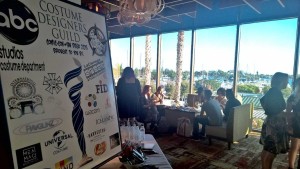 Muto asked when the script “became alive” for each of them. Gilford noticed, when he was designing Mike Judge’s Idiocracy, that Judge wasn’t visual, coming from a music background, but could “hear” the rhythms of a script, in contrast to his Tron: Legacy director, Joseph Kosinski, “who was an architect. We spoke the same language.”
Muto asked when the script “became alive” for each of them. Gilford noticed, when he was designing Mike Judge’s Idiocracy, that Judge wasn’t visual, coming from a music background, but could “hear” the rhythms of a script, in contrast to his Tron: Legacy director, Joseph Kosinski, “who was an architect. We spoke the same language.”
Then again, sometimes the property is fully alive for all involved, even before you come on board. For The Force Awakens,” Gilford said “you learn pretty quickly that everyone has their own version of what Star Wars is.”
Melton and Mott both noted that in the TV world, first conversations don’t necessarily begin with the director, since “the writer’s the king.” Mott added he always tries to read full scripts, “even if there’s a time pressure.”
But they also noted, like their earlier CDG counterparts, that tools and timetables are changing.
Melton mentioned it can “get tricky” with visual effects, which often – particularly in genre shows – “get in the wheelhouse” of the production designer’s craft, and Gilford said he spends extra months on a film, during its postproduction process, to ensure a kind of continuity of vision.
When the panel was opened up to audience questions, there was one about pre-production. On Thursday, the Location Managers Guild had a panel in the nearby Hyatt Ballroom, and one of the attendees asked the ADG group about the location manager’s role in setting the “look” of a production.
Verreaux said that “locations managers are some of the first people we work with,” and the rest of the panel agreed.
On the whole, the gamut of below-the-line panels – a slowly increasing trend in Con programming – gave attendees a solid overview of some production workflow basics, which was good, since Muto noted in his opening remarks that only a fraction of the hundreds of now-extant film schools even offer courses in production design.
“It’s a miracle there are so many well-designed movies,” he said.
Other miracles were invoked earlier. On the first CDG panel, Nedavniaya mentioned that she had gone to an earlier Comic-Con and heard costume designer Isis Mussenden speaking. Having recently graduated from school, she went up and showed Mussenden some of her illustrations.
They exchanged information, and Nedavniaya forgot all about it until the phone rang a few days later and Mussenden was asking if she wanted to come aboard the Prince Caspian installment of the Narnia films and do costume illustrations.
It was in direct contrast to some panels about breaking into the comics biz itself, which stated you should never expect a direct job offer as a result of coming to Comic-Con.
It perhaps explained, however, the numbers of audience members coming toward the stage, after each of the guild panels was finished.





